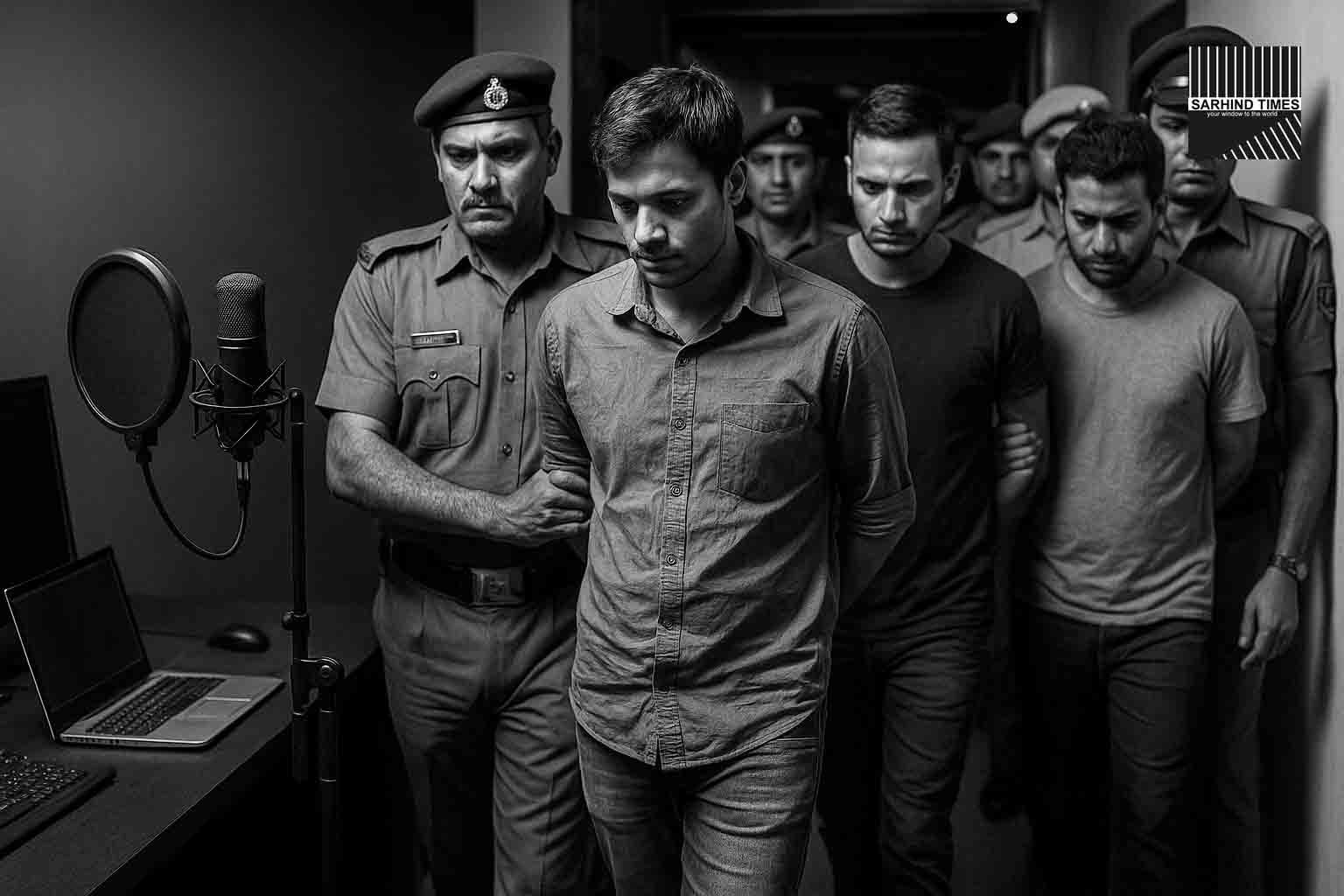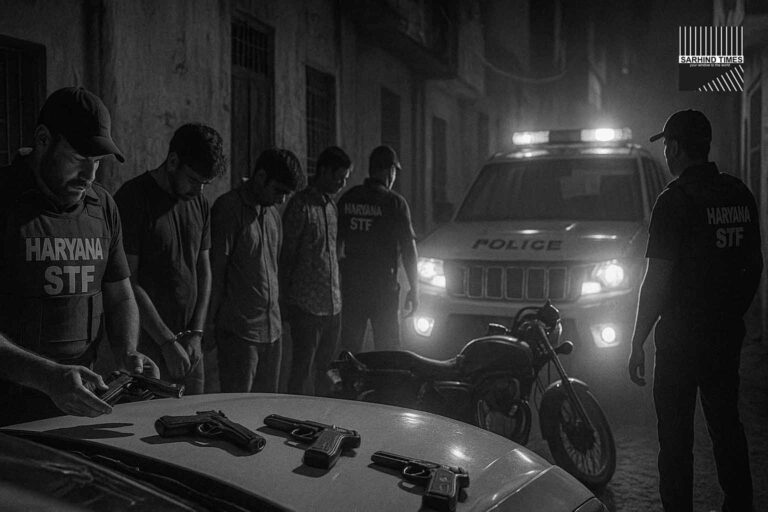The city of Varanasi, known as the spiritual heart of India, has found itself at the center of a heated controversy after an offensive YouTube song targeting Goddess Durga went viral earlier this month. The video, uploaded on September 19, sparked outrage across communities before being taken down two days later.
Varanasi Police have since launched a wide-reaching investigation, resulting in the arrest of nine individuals, including the alleged mastermind, lyricist, singer, and members of the production crew. Officials say the arrests reflect a zero-tolerance approach to hate content online, especially when it risks inflaming communal tensions.
The Arrests So Far
The latest arrests include:
- Rajveer Singh Yadav: Identified as the mastermind. Allegedly wrote the lyrics and financed the production.
- Sonu & Shashank Prajapati: Linked to the recording and circulation of the song.
Earlier, police had already detained:
- The folk singer who performed the track.
- Her husband, accused of aiding its publication.
- Other members of the music team, including instrumentalists and technicians.
Police also seized recording equipment, instruments, and digital storage devices during raids.
Legal Framework
Two FIRs have been filed citing multiple laws:
- Bharatiya Nyaya Sanhita (BNS): For promoting enmity between groups and hurting religious sentiments.
- Information Technology Act: For publishing offensive material online.
- Cinematograph Act provisions: Related to content distribution without proper clearance.
The arrests indicate law enforcement’s willingness to invoke a mix of traditional and digital-era laws to curb hate-driven online content.
Community Reaction
The video’s circulation triggered immediate backlash:
- Devotees and local priests condemned the lyrics as a deliberate attempt to provoke unrest.
- Civic groups called for stronger filters on social media platforms.
- Digital rights activists, however, urged caution, warning against excessive policing of artistic expression.
One temple priest in Varanasi remarked:
“Faith cannot be mocked under the guise of art. The law must act, or people’s anger will boil over.”
By contrast, a digital freedom advocate noted:
“While this video was clearly offensive, blanket crackdowns on online content risk chilling free speech.”
The Role of Platforms
The incident has reignited debate on the responsibility of platforms like YouTube:
- Why did the video stay up for two days despite mass reporting?
- Should algorithms detect and block offensive content proactively?
- How can takedowns be accelerated without curbing legitimate creative work?
Experts say India’s regulatory framework is still catching up with the scale and speed of online content.
A Growing Pattern
This case is not isolated. India has witnessed multiple flare-ups linked to digital content:
- Viral songs or videos targeting religious figures.
- Communal memes circulating on WhatsApp.
- Politically motivated videos aimed at stoking divisions.
Authorities argue that such incidents demand stronger surveillance, but civil liberties groups stress that regulation must balance security with freedom of expression.
Cybercrime & Enforcement
Varanasi Police revealed that a joint cybercrime team tracked the accused across districts by:
- Tracing IP addresses and digital uploads.
- Following channel revenue trails.
- Coordinating with multiple police stations for arrests.
Officers confirmed that forensic analysis of seized devices will focus on:
- Whether the video was part of a larger planned campaign.
- Possible links to groups funding provocative digital content.
- Revenue earned from ads and monetization.
The Political Angle
Opposition leaders accused the ruling government of “using selective outrage” in such cases, while the ruling party defended the arrests as essential for communal harmony.
The case has therefore taken on a political hue, with parties debating freedom vs. responsibility.
Social Impact in Varanasi
For Varanasi residents, the controversy has brought unwanted attention:
- Religious leaders stress that the city’s ethos of Ganga-Jamuni Tehzeeb (communal harmony) must be preserved.
- Parents are worried about young audiences consuming unverified, harmful content online.
- Many citizens demand stricter digital literacy campaigns alongside policing.
Expert Commentary
- Cyber law expert: “The arrests set a precedent under BNS. But the key will be courts establishing clear guidelines.”
- Sociologist: “Digital hate content spreads fast because it appeals to emotion. Policing alone is not enough; education is needed.”
- Economist: “Monetization of divisive content is a dangerous trend—we must hold platforms accountable.”
Challenges Ahead
- Forensic Work: Analyzing seized devices for deeper networks.
- Court Trials: Proving intent and funding in court will be critical.
- Preventive Measures: Building early-warning mechanisms for digital hate content.
Broader Implications
The arrests highlight three realities of modern India:
- Religion & Technology Collide: Faith is deeply woven into society, making offensive digital content highly combustible.
- Law Enforcement is Evolving: Police are adapting cybercrime units, but resources remain stretched.
- Society is Divided: Public debates on censorship vs. expression are intensifying.
Conclusion
Varanasi’s YouTube song controversy reflects the delicate balance between free expression, communal harmony, and digital regulation. The arrest of nine individuals shows a determined police response, but the real challenge lies in addressing the systemic issues—platform accountability, digital literacy, and preventive policing.
As India goes deeper into the digital age, such cases will test not just the law but the country’s ability to uphold both democracy and harmony.
#Varanasi #CyberCrime #HateContent #UPPolice #BNS #YouTube #SarhindTimes #DigitalSafety
























+ There are no comments
Add yours